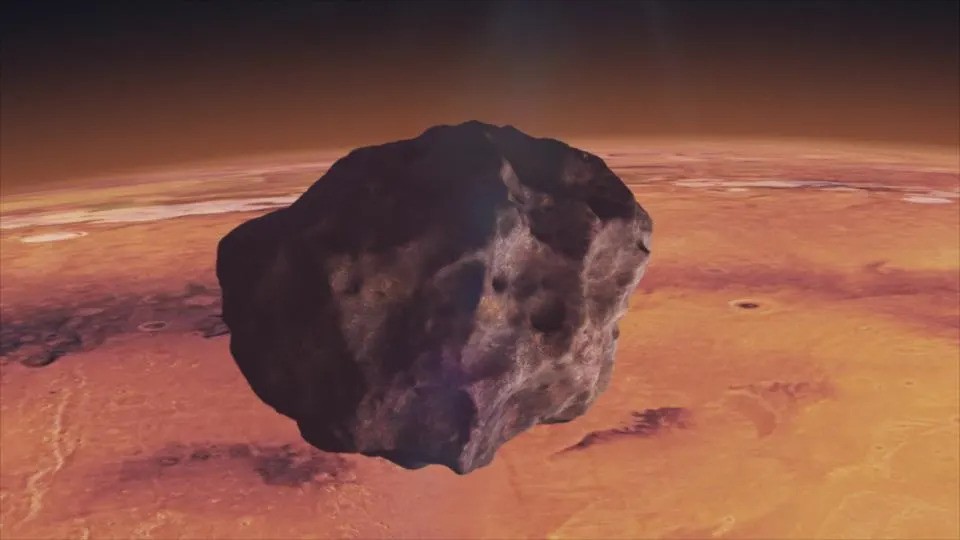Falling large meteorites on Mars occur significantly more often than previously thought. Such conclusions scientists have made on the basis of the analysis of seismograph data on the InSight probe.

Mars meteoroid collision
In a recent study based on data from NASA’s Mars InSight Lander spacecraft, an international team of scientists led by a Brown University researcher found that Mars may be bombarded by space rocks more often than previously thought. According to a study published in the journal Science Advances, collisions occur between two and ten times more often than previously thought, depending on the size of the meteoroids.
“It’s possible Mars is more geologically active than we thought, which holds implications for the age and evolution of the planet’s surface,” said lead researcher Ingrid Daubar, associate professor of Earth, environmental and planetary sciences at Brown.
As part of the study, the research team used InSight’s highly sensitive onboard seismometer to detect eight new impact craters from meteoroids that had not previously been seen from orbit. The frequency of these cosmic collisions challenges current ideas about how often meteoroids strike the Martian surface and points to the need to revise existing models of Martian craters to account for higher impact velocities, especially from smaller meteoroids.
The results could ultimately change current ideas about the Martian surface, because impacts from small meteoroids continue to shape it, and about the collision history of not only Mars but also other planets. “This is going to require us to rethink some of the models the science community uses to estimate the age of planetary surfaces throughout the entire solar system,” Daubar said.
Analyzing information from InSight
The six craters the researchers found were near the site where the stationary InSight lander landed. The two distant collisions they identified from the data were the two largest collisions ever detected by scientists, even after decades of observations from orbit. The larger impacts, each of which left a crater about the size of a soccer field, occurred only 97 days apart, highlighting the high frequency of such geologic events.
NASA’s InSight mission operated from November 2018 through December 2022. One of its main goals was to measure the seismological vibrations of the planet. Previously, new impacts on Mars were spotted using before-and-after images taken by cameras in orbit around the planet. The seismometer provided a new tool to search for and detect these collisions, many of which might otherwise remain undetected.
New craters on Mars’ surface
These metrics are also important for assessing the potential hazards that collisions pose to future exploration missions when NASA sends rovers or even human missions into space.
To determine exactly when and where collisions occurred on Mars, Daubar and a team of researchers analyzed InSight’s seismic signals, then compared that seismic data to images taken by NASA’s Mars Reconnaissance Orbiter.
The team visually confirmed that eight of these events were new craters by examining before and after images. This dual approach — using seismic data and orbital images — allowed them to confirm that the seismic signals were caused by collisions and cross-check their findings for accuracy.
The InSight lander had been collecting seismic data since landing until its solar panels, as expected, became covered in dust to the point where the vehicle could no longer generate power.
Collisions cause marsquakes
The current study by Daubar and the research team is linked to a companion paper in Nature Communications that uses even more data from InSight to analyze all the high-frequency seismic events recorded by the landing vehicle.
The accompanying paper, also published on June 28, 2024, assumed that all of these events were caused by collisions, and the resulting estimate matched with what the researchers on Daubar’s team calculated independently, further supporting each team’s conclusions.
“It’s possible that more events that InSight picked up during its mission were actually impacts,” Daubar said. “Next steps are to do more detailed orbital searches to try to confirm this using machine learning techniques. If we can confirm even more impacts, we might be able to find other seismic signals that were caused by impacts, too.”
According to phys.org


